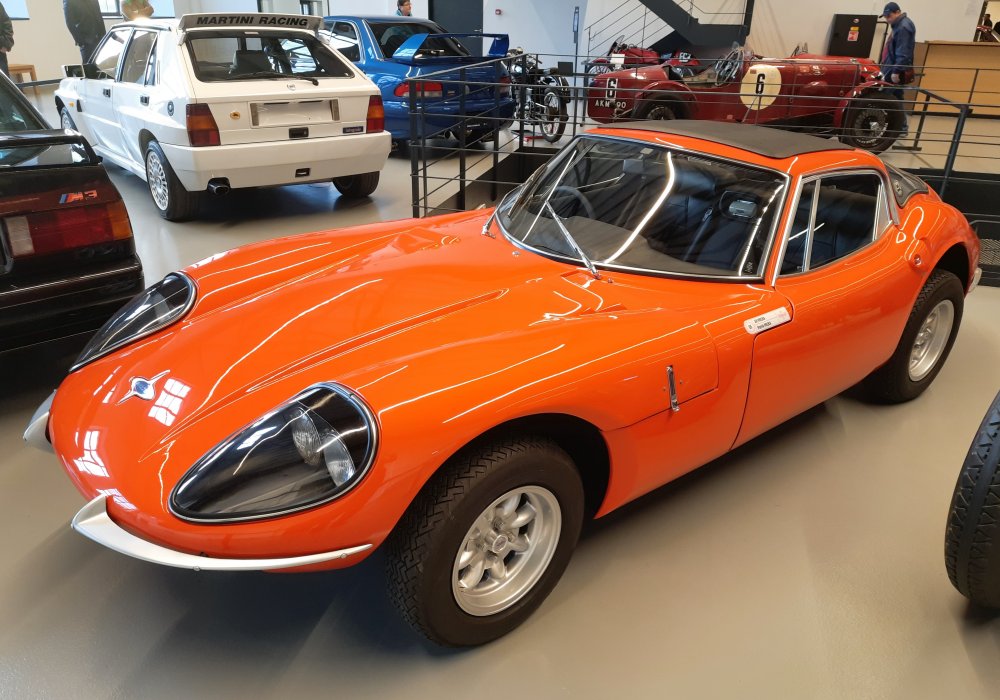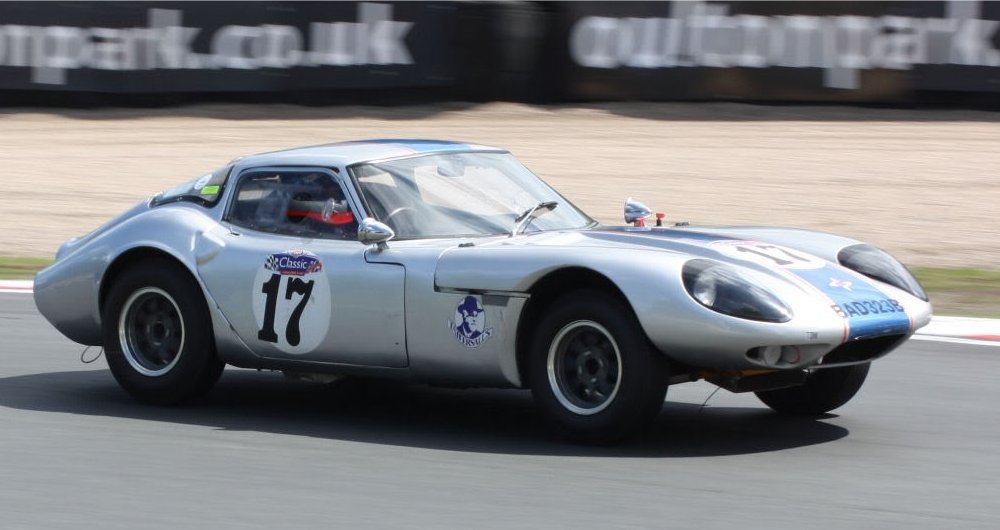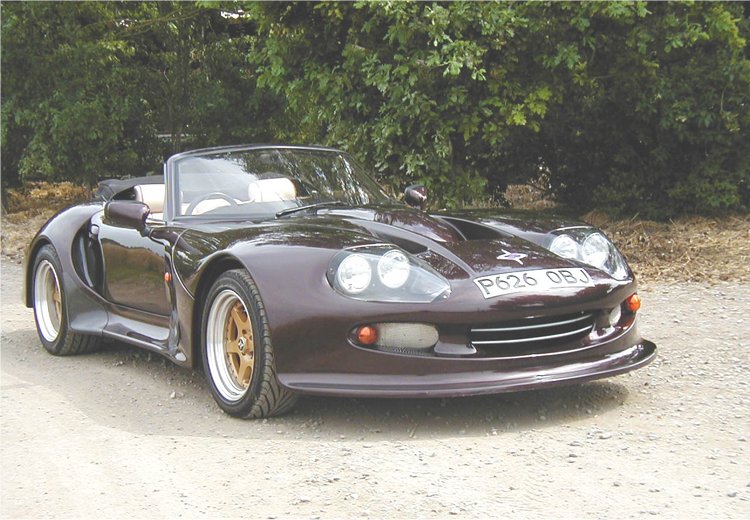Introduction to Marcos
Marcos was a small but distinctive British sports car manufacturer known for its unique engineering, handcrafted wooden chassis (in early models), and stylish grand tourers. Founded in the late 1950s, Marcos carved out a niche for itself by producing lightweight, agile performance cars that catered to enthusiasts. Despite a tumultuous financial history, the brand earned a loyal following and became a cult favorite among British car aficionados.
Founding and Early Years (1959–1965)
Marcos was founded in 1959 by Jem Marsh and Frank Costin—hence the name “Marcos,” derived from their surnames. Marsh was a former racing driver and engineer, while Costin had previously worked as an aerodynamicist for De Havilland Aircraft and Lotus.
Wooden Chassis Innovation
The earliest Marcos models were famous for their wooden monocoque chassis, made from marine plywood. Frank Costin, who had aircraft engineering experience, believed that wood was light, strong, and ideal for constructing lightweight race cars. These chassis proved not only innovative but competitive on the track.
Key Early Models
- Marcos GT Xylon (1959) – The first model, used primarily in racing. It had a striking boxy shape and was raced by a young Jackie Stewart, who praised its handling.
- Marcos Luton Gullwing (1961) – Featuring gullwing doors and continued use of a wooden chassis, this model marked the brand’s first attempts at road-going cars.
Rise of the Marcos GT (1964–1971)
Marcos gained greater attention in the mid-1960s with the introduction of the Marcos GT series. These models combined attractive fiberglass bodies with the innovative wooden chassis. The styling and performance earned Marcos a solid reputation among sports car fans.
Marcos 1800 GT (1964)
The 1800 GT featured a Volvo-sourced B18 engine and was praised for its sleek lines and excellent handling. Despite its success, the wooden chassis proved difficult to mass-produce, and Marcos transitioned to steel chassis construction by 1969.
Transition to Steel
By the end of the 1960s, wooden chassis were phased out in favor of steel tubular frames, which were easier to produce and allowed for more varied engine configurations. This shift also improved structural rigidity and durability.
Marcos Mantis XP (1968)
Marcos made a brief foray into prototype racing with the futuristic Mantis XP, a wild mid-engined car that competed at Spa and other endurance events. Though not a commercial success, it showcased the company’s ambition and engineering creativity.
Financial Struggles and First Collapse (1971)
Despite critical acclaim and a growing product line, Marcos struggled with undercapitalization and production bottlenecks. International expansion, particularly to the U.S., was hindered by regulatory issues. In 1971, overwhelmed by financial problems, Marcos went into voluntary liquidation.
Export Woes
A significant shipment of cars was sent to the U.S., but many failed to meet emissions and safety standards. Customs delays and storage fees resulted in serious financial loss, contributing heavily to the company’s closure.
Rebirth and Revival (1981–1990s)
Jem Marsh resurrected Marcos in the early 1980s, initially focusing on servicing and restoring older models before restarting production. Marcos returned to the sports car market with new designs that retained the brand’s hallmark characteristics: long hoods, low profiles, and aggressive styling.
Marcos Mantula (1983)
Powered by Rover V8 engines, the Mantula was available as a kit or factory-built and offered modernized design while retaining the company’s vintage flair. It marked the beginning of a successful second act for Marcos.
Marcos Martina
Designed as a more affordable alternative to the Mantula, the Martina used Ford mechanicals and attracted kit car enthusiasts looking for performance on a budget.
Racing Return
Marcos also returned to racing during the 1990s, producing GT cars that competed in events such as the British GT Championship and even the 24 Hours of Le Mans. These efforts helped raise the company’s profile once again.
Third Era: Marcos LM, Mantaray, and TSO (1990s–2000s)
The 1990s saw Marcos introducing increasingly refined and powerful models, culminating in their flagship GT cars. Though stylish and capable, these cars often faced competition from larger, more financially stable manufacturers.
Marcos Mantara (1992)
Built with both style and comfort in mind, the Mantara used a modified Rover V8 engine and was offered as a more refined grand tourer than its predecessors.
Marcos LM Series
Drawing from the company’s racing success, the LM series were road-legal versions of the company’s Le Mans GT cars. These were limited-production, high-performance models with track-focused design.
Marcos Mantaray (1997)
Styled by Simon Cox, the Mantaray was more modern and futuristic compared to previous Marcos cars. It aimed to attract a broader market but was produced in limited numbers.
Marcos TSO (2004–2007)
The TSO (Touring Supercar) was the most powerful and ambitious Marcos ever produced, featuring a Chevrolet V8 and contemporary styling. It could accelerate from 0 to 60 mph in just 4 seconds and was lauded for its raw performance and aesthetics.
Final Demise and Legacy (2007–Present)
Despite the success of the TSO, Marcos once again fell into financial trouble. Production ceased in 2007, and efforts to revive the company in later years failed to gain traction. Nonetheless, the brand remains fondly remembered.
Collector Status
Classic Marcos models—particularly the early wooden-chassis GTs and the Mantula—are now considered collector cars. Their rarity, distinctive design, and historical quirks make them prized by enthusiasts.
Aftermarket and Support
While Marcos is no longer in production, a network of specialists and clubs continues to support existing vehicles, offering parts, restorations, and technical expertise.
Engineering and Design Legacy
Marcos is remembered for its daring innovation, particularly its use of non-traditional materials and aerodynamic styling. Its early wooden monocoques were far ahead of their time, offering both strength and weight savings.
Notable Engineering Choices
- Wooden chassis in early models (1959–1969)
- Fiberglass bodies for lightness and ease of manufacturing
- Front-engine, rear-drive layout across nearly all models
- Frequent use of Rover and Ford engines, later Chevrolet LS V8s
Conclusion
Marcos Cars remains a fascinating chapter in British automotive history. Born from innovation and passion, the company lived through multiple revivals, always with a clear commitment to building cars that were unique, fast, and unmistakably characterful. Despite its modest size and repeated struggles, Marcos earned its place in the pantheon of iconic British sports car manufacturers.
List of Marcos Cars
| Image | Name | Summary | Categories | hf:categories |
|---|---|---|---|---|
| Marcos 1600 GT | The Marcos 1600 GT was introduced in the late 1960s as the smaller-capacity companion to … | Marcos | marcos manufacturer | |
| Marcos GT 1800 | The Marcos GT 1800 was one of the most important early models in the long … | Marcos | marcos manufacturer | |
| Marcos GT 1800 Coupé | The Marcos GT 1800 Coupé, introduced in the mid-1960s, was one of the defining early … | Marcos | marcos manufacturer | |
| Marcos GT 3-Litre | The Marcos GT 3-Litre was the flagship of the classic Marcos range during the late … | Marcos | marcos manufacturer | |
| Marcos LM 500 Spider | The Marcos LM 500 Spider was introduced in the mid-1990s as part of Marcos’s renewed … | Marcos | marcos manufacturer | |
| Marcos Mantis | The Marcos Mantis was one of the most striking, ambitious and unusual cars ever produced … | Marcos | marcos manufacturer | |
| Marcos Mantis Spider | The Marcos Mantis Spider was the open-top companion to the 1990s Marcos Mantis coupé — … | Marcos | marcos manufacturer | |
| Marcos Mini1300 | The Marcos Mini 1300 was a small sports car produced by Marcos Engineering in the … | Marcos | marcos manufacturer | |
| Marcos MiniGT 850 Mk II | The Marcos Mini GT 850 Mk II, produced in the 1960s, was a British sports … | Marcos | marcos manufacturer |








